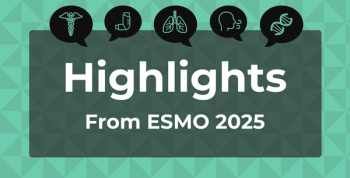
Age at Diagnosis Associated With Disparities in Amblyopia Resolution
Interventions to diagnosis amblyopia earlier could help in addressing inequities in the resolution of amblyopia.
Disparities in outcomes in children with
Amblyopia, otherwise known as “lazy eye,” is an eye condition that affects 2% of the population and is the leading cause of vision loss in children.2 Risk factors for unsuccessful treatment include Medicaid insurance and being African American. There are multiple factors that could affect disparities in amblyopia outcomes, including treatment compliance and ability to access pediatric eye care. This study aimed to identify clinical and sociodemographic factors associated with treatment outcomes in amblyopia through an analysis on 10 years of data for children seeking care.
Children aged 17 years and younger diagnosed with amblyopia and treated at an eye clinic in Los Angeles between January 1, 2012, and June 1, 2022, were eligible for this study. Patients were included if they had unilateral refractive or strabismic amblyopia and were aged 8 years or younger at the time of their diagnosis. An interocular visual acuity difference of 0.2 logMAR or higher or a consistent fixation preference were defined as amblyopia.
Patients were excluded if they had visual acuity that did not meet the definition of amblyopia, were undergoing active treatment for amblyopia, had previously been diagnosed at another clinic, had bilateral or deprivation amblyopia, or were lost to follow-up prior to finishing their treatment.
Data from electronic medical records were used for the study and included age at diagnosis, sex, race, ethnicity, zip code, insurance type, and diagnosis of neurodevelopmental disorders. Visual acuity in each eye, ocular alignment, and refractive error were all collected during visits. More advanced methods of measuring visual acuity could be used as a child aged. The resolution of amblyopia was evaluated at each visit.
There were 168 children included in this study who completed treatment for amblyopia. A total of 78% had resolved amblyopia without recurrences after a mean of 3.2 years of follow-up. Younger mean (SD) age at diagnosis (3.3 [1.7] vs 4.5 [1.9] years) and English as the primary language (79.4% vs 62.2%) were associated with resolution of amblyopia compared with the patients who did not have resolved amblyopia.
Severity of amblyopia at diagnosis was associated with the outcome of amblyopia in a borderline association (0.44 [0.28] logMAR in resolved amblyopia vs 0.54 [0.34] in persistent amblyopia). Optotype acuity testing was not able to be performed in 33% of patients due to age and neurodevelopmental disorders. Higher estimated household incomes were associated with resolved amblyopia compared with unresolved amblyopia ($83,315 [29,276.64] vs $71,623.00 [26,842.56]). Higher Child Opportunity Index socioeconomic (50.9 [25.3] vs 40.4 [24.5]) and overall scores (50.9 [27.3] vs 40.0 [26.4]) was also associated with resolved amblyopia.
Patients with resolved amblyopia had a higher rate of reporting at least 50% adherence to treatment (83.2% [25.0] vs 75.6% [24.4%]). Governmental insurance and lack of amblyopia resolution were also associated (56.8% of patients had governmental insurance in persistent amblyopia compared with 39.7% in resolved amblyopia).
There were some limitations to this study. The study was performed in a single center was a retrospective study, which could make the generalizability limited. Only patients who had concluded their treatment were included, with patients who had been lost to follow-up not included. The study only included patients who had more than 2 visits, but some patients could have resolved their amblyopia in 2 visits alone. Minor differences in visual acuity results could exist. Large reports of race and ethnicity were unknown. There was no objective measurement of treatment compliance and there was no quantitative assessment of visual acuity in those who could not take optotype testing.
The researchers concluded that sociodemographic factors can have an immense impact on resolving amblyopia. Amblyopia persistence was more likely in patients with governmental insurance, lower socioeconomic status, and who were older at diagnosis. Improving access to screenings could help in treating children with amblyopia and resolving the eye condition quicker in all children.
References
- Matsunaga K, Rajagopalan A, Nallasamy S, et al. Disparities in amblyopia treatment outcomes: the impact of sociodemographic factors, treatment compliance, and age of diagnosis. Ophthalmology. 2024:S0161-6420(24)00569-4. doi:10.1016/j.ophtha.2024.09.021
- Amblyopia (lazy eye). National Eye Institute. Updated September 22, 2022. Accessed October 2, 2024.
https://www.nei.nih.gov/learn-about-eye-health/eye-conditions-and-diseases/amblyopia-lazy-eye#section-id-5560
Newsletter
Stay ahead of policy, cost, and value—subscribe to AJMC for expert insights at the intersection of clinical care and health economics.







































